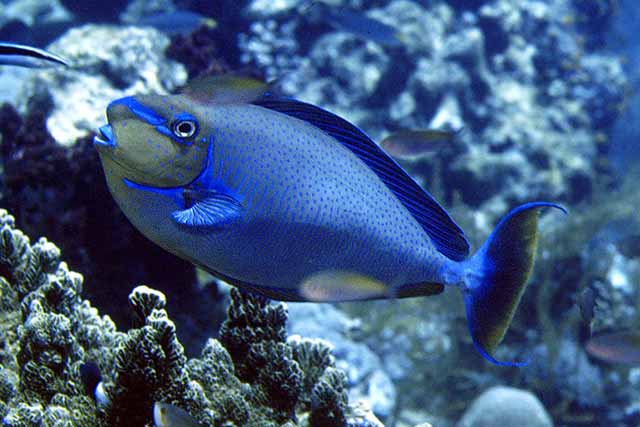| Acanthuridae (Surgeonfishes, tangs, unicornfishes), subfamily: Nasinae |
| 60 cm TL (male/unsexed) |
|
reef-associated; marine; depth range 1 - 50 m |
| Indo-pan-Pacific: East Africa to the Galapagos Is. north to southern Japan, south to the southern Great Barrier Reef and New Caledonia, Tuamotus, throughout Micronesia |
|
Dorsal spines (total): 6-6; Dorsal soft rays (total): 26-27; Anal spines: 3-3; Anal soft rays: 27-29. Adults develop a convexly rounded prominent snout and unusually tall dorsal and anal fins. Side of body with vertical blue lines which break up into small blue spots dorsally and ventrally. A broad blue band extending from eye to front of rostral protuberance (Ref 9808).
Description: Characterized further by dark grey body color; blue lips; can quickly switch on electric-blue markings; caudal peduncle with pair of bony plates,, each with large keel with forward projecting point; caudal fin with filamentous lobes; greatest depth of body 2.2 (subadults)-2.6 in SL (Ref. 90102). |
| Occurs in deep lagoon and seaward reefs. Found forming loose schools along upper regions of deep drop-offs (Ref. 48637). Forms mid-water aggregations off steep slopes during the day to feed on zooplankton. Usually found alone or in pairs. Omnivorous. Has the ability to show or hide its blue markings (Ref. 9710). Minimum depth reported taken from Ref. 27115. |
|
Least Concern (LC); Date assessed: 06 May 2010 Ref. (130435)
|
| harmless |
Source and more info: www.fishbase.org. For personal, classroom, and other internal use only. Not for publication.

